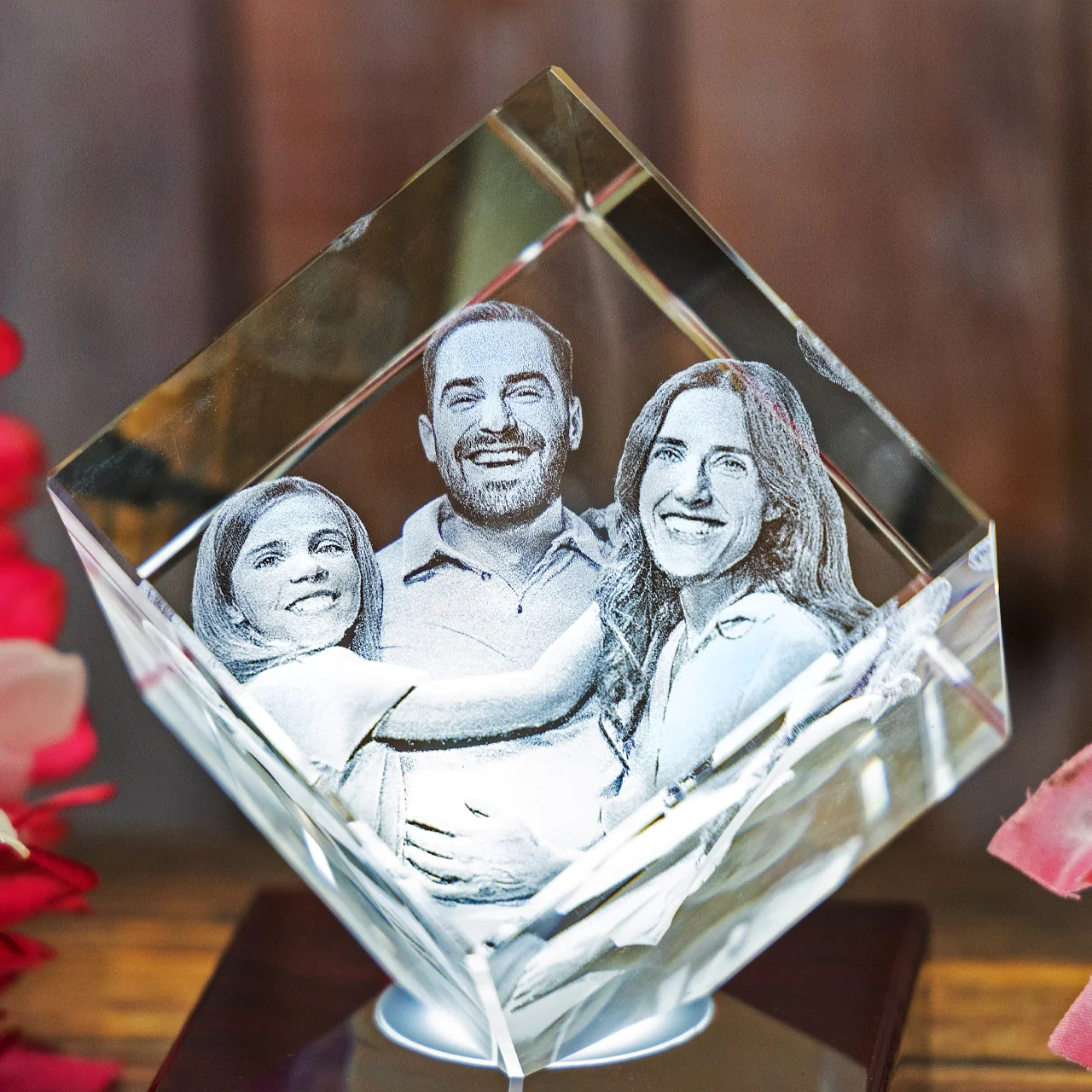Give your loved ones a keepsake that will last for years. This beautiful crystal features a photo of your choice engraved into the surface.
Diamond is known for its exceptional material properties, including high toughness. It is, however, brittle at some orientations. This paper presents a promising approach for patterning and sculpting optically active diamond geometries for applications in photonics, sensing and optomechanics.
1. Elegant and Timeless
Exceptionally hard, light, and beautiful, diamond crystal is the perfect way to capture that special moment in time. Engrave your photo and a message into this elegant crystal heart and add an illuminated base for the perfect gift that will be cherished forever.
Laboratory-grown diamond (LGD; also known as artificial, man-made, or synthetic diamond) is pure carbon crystallized in an isotropic 3D form. Unlike diamond simulants, which are superficially similar non-diamond materials, lab-grown diamond has identical chemical and physical properties as naturally formed diamond.
The new fabrication process allows the parallelization of critical fabrication steps based on lithography, providing a route to high volume production of lithographically defined diamond micro- and nanosystems. This includes mechanical systems such as high-Q nanomechanical resonators5, extremely stiff diamond tips6,7, and nanoindenters8, as well as optical components such as micro-lenses9,10, gratings11, and microcavities12,13. The resulting components exhibit micrometer dimensional tolerances and surface roughness significantly lower than those made by conventional methods.
2. Casts Shadows of Light
The crystalline shape of our 3D Crystal Diamond acts as a beautiful and permanent keepsake to remember your special occasion. It’s the perfect gift for a birthday, anniversary, graduation or just to show someone you care.
To more accurately model the physical behavior of a diamond, we use a dielectric material that uses refraction to simulate how light enters and exits the object. We also use the Physical Light shader on the main light, which simulates the natural fall off or decay of the light.
The refraction of the diamond is handled by the Caustics settings in the light’s Caustics and Global Illumination sections. This makes the diamond look brighter internally and allows us to more accurately render the shadows that the diamond casts on its surroundings. It’s starting to look a little more like a real diamond! The next step will be to improve the caustics with a few more tweaks.
3. Versatile
We will take any vertical photo and turn it into a crystal diamond for you that is sure to be cherished by your loved ones. Engraving is included with each order to make it a truly special gift. Add a led base to illuminate your crystal for an even more impressive keepsake.
Radiotherapy (RT) is a vital treatment method in oncology, both for external beam radiation therapy (EBRT) and intraoperative radiation therapy (IORT). Versatile detectors that can respond to different radiations with high sensitivity and linearity in dose-rate are desirable for the evaluation of RT techniques.
A high-quality single-crystal CVD diamond sample was fabricated and characterized as a dosimeter. The response of the dosimeter to low-energy X-rays and high-energy MeV-range electron beams was evaluated, and excellent sensitivity and linearity with dose-rate were observed. This demonstrates the suitability of a diamond dosimeter to monitor both RT techniques and radiation protection dosimetry. This is the first time a dosimeter has been fabricated and characterized using an “electronic-grade” single-crystal diamond sample with impurity concentration three orders of magnitude lower than natural diamond.
4. Available in Three Sizes
Diamond is an extraordinary material with exceptional optical, chemical and mechanical properties. It has one of the highest tensile strengths, and a relatively small compressibility. It has also been used in next-generation sensing and nanophotonic devices1.
Polycrystalline chemical vapour deposition (pCVD) diamond substrates are of interest to dosimetry due to their close equivalence with bodily tissue. The sensitivity and timing response of such substrates are influenced by native deep and shallow defects that trap charge carriers. This problem can be improved by pre-irradiation and by introducing metal-diamond contacts at the surface, but these techniques require complex post-fabrication processes.
A prototype of a 3D all-carbon dosimeter has been developed using laser-writing to make graphitic surface connections on a pCVD diamond substrate. This reduces the electric field distortion caused by metal-diamond contact at the surface of the detector. The device was shown to have suitable dose-rate linearity and time resolution, operating at lower voltages (+6 V) than previous diamond detectors with similar internal structures.
